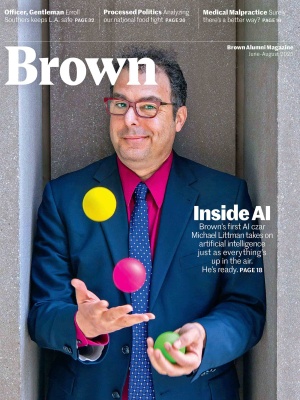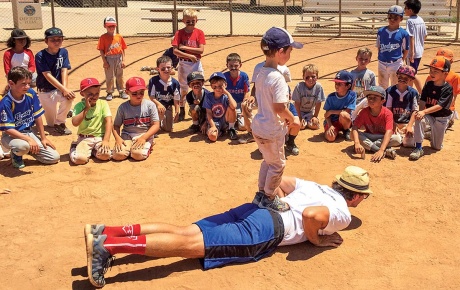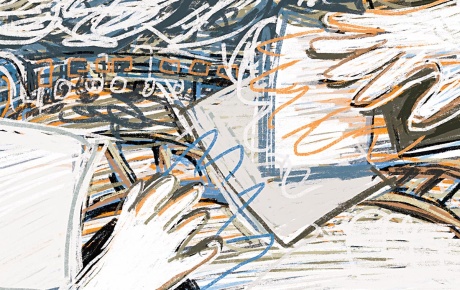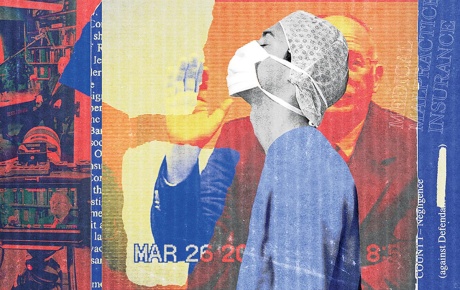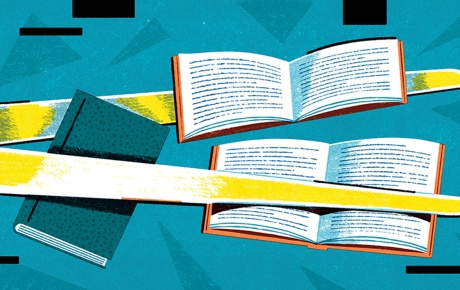‘Shift the Vibrations’
In Intro to Rap Songwriting, students learn to listen deeply, engage with a complex art form, and share their hearts.
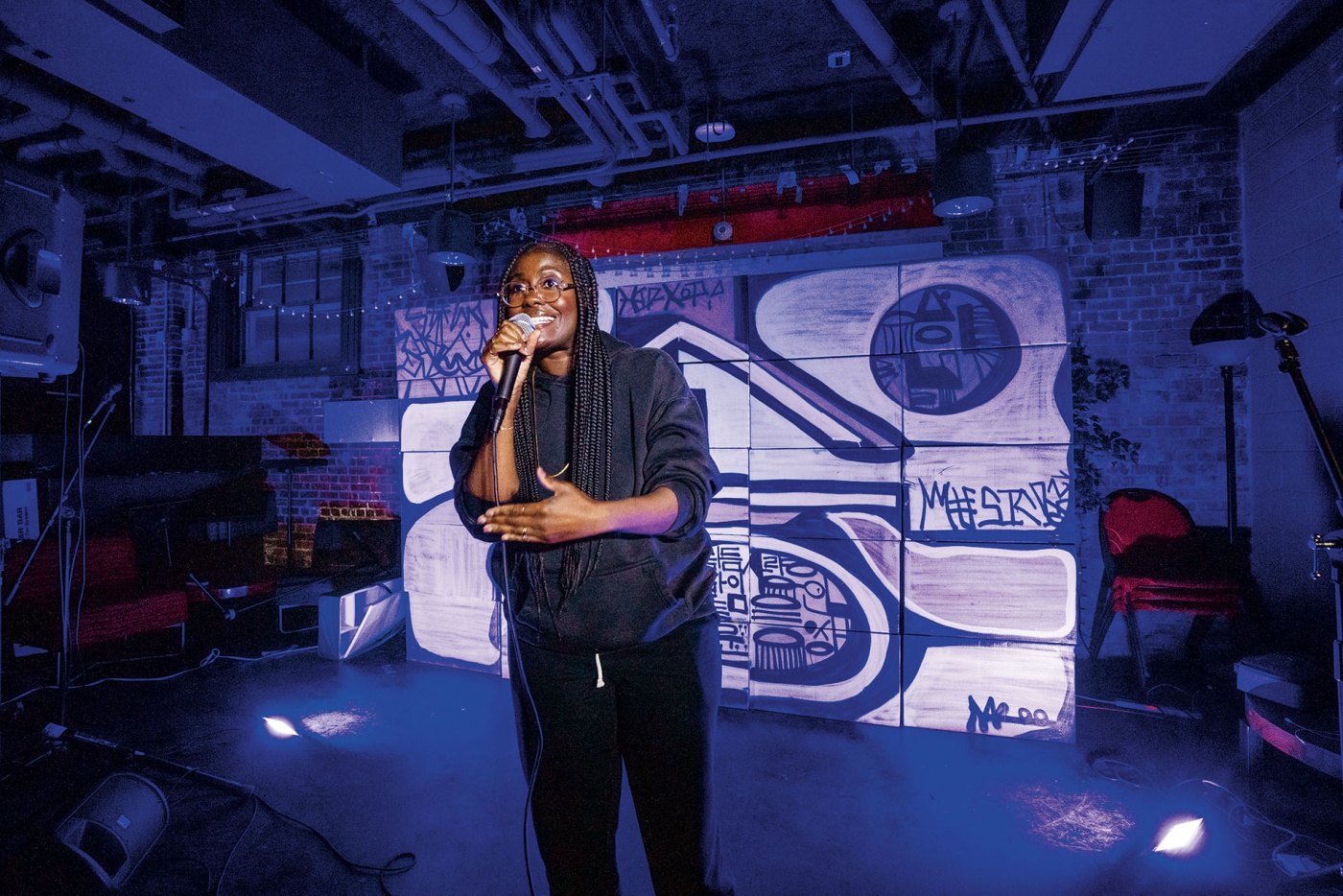
Who do you become through rap?” asks Enongo Lumumba-Kasongo, an assistant professor of music, in the syllabus for her course Intro to Rap Songwriting.
For Haleema Aslam ’26, the answer is a transformed person. Learning the art form, she says, made her a more confident speaker, a better advocate, and a more courageous and bold performer. It gave her the bug for all things performance: “I ended up taking another acting class the following semester,” she says, and went on to give a TED talk in which she shared her story of escaping child marriage in Pakistan and eventually gaining asylum
—and now citizenship—in the United States.
But joining the class in itself was a leap for Aslam, whose mother taught her that listening to music was a sin. Even though she moved here nearly a decade ago, Aslam says listening to music still made her feel guilty, like she “was doing something wrong.”
But she made the leap, learning alongside a dozen other students about the practical tools needed to write and record songs, as well as the basics of writing lyrics and the history of hip hop. By the end of the course, they had each created original compositions.
“It’s been absolutely beautiful,” Aslam says. “In psychology, if you have gone through trauma in life, you have to have an outlet to heal from that. This class is really allowing me that platform.”
Rapper-scholar
Professor Lumumba-Kasongo doesn’t just teach rap—she lives it, as a professional rapper making music under the moniker Sammus. Although she had originally planned to go into science (she has a doctorate in science and technology studies from Cornell), her music career began taking off while she was a graduate student.
She was ready to put her career as an academic “on the shelf” to pursue music full-time, but then a friend sent her an application for a postdoc in Brown’s music department to study and teach courses about Afro-diasporic musical practices. She ended up getting the job, which steered her back onto a college campus.
“It’s been a full-circle moment,” she says. “I’m in the same kind of space where I was cultivating my own musical practice in my dorm room, but I’m doing it now with students.”
Lumumba-Kasongo emphasises how to listen deeply. Distracted listening, she says, is the norm, but she challenges her students to sit and immerse themselves in one song or album for as long as it takes to understand the craft and technique the artist is using. Like a writer reading, a musician has to listen, explains Lumumba-Kasongo. It’s the first step in becoming a “thoughtful artist.”
Every week the students are assigned songs and write reflections on them, ranging from “Check the Rhime” by A Tribe Called Quest to “Bodak Yellow” by Cardi B. “In a world where it’s so hard to make change, I want to empower the students by showing that a song can do a lot of work,” she said. “We can shift the vibrations.”
“Making this accessible is important in breaking that barrier,” said Marcus Grant ’23 AM, ’27 PhdD, a teaching assistant for the course and a PhD student in ethnomusicology. “I’m encouraging people to do things that are very uncomfortable. It’s an opportunity to find out something new about yourself.”
Students are responsible for putting together three original projects: two verses of either 8 or 16 bars, and for the end of the semester, a full-length song, which is uploaded to a publicly available class mixtape.
Songwriting homework
Students write and record their own songs with the help of a take-home recording kit that includes a mic, a USB cable to plug into a laptop, and an audio interface.
Aslam, who says “my whole life, I have been struggling with what home is for me,” did her final project on getting U.S. citizenship and coming to live in Rhode Island. “For me it is a land of opportunities/ To build my chosen family, I love my community/ My classmates and professors help me know I’m not alone/ Brown is now my family and Providence is home,” she raps.
Student George Dauda’s song focuses in part on the mundane experiences of day-to-day life: “Kick rocks—pass the lake and say bye/ If I’m aligned to the sky worldwide/ They would’ve never doubted G Dauda had shine/ Would’ve never pouted and rattled the mind/ At every checkpoint life relax my spine.”
For Dauda, a longtime fan of Sammus, taking the class “was a miraculous blessing, to meet someone who is one of my heroes.” It’s definitely worth the rushed Monday afternoon commute he makes from his job as a preschool teacher in Providence to Brown’s campus. He’s participating through a community fellows program run by Brown, which offers spots in classes for free to Rhode Islanders. “I’m learning so much from my fellow students,” he says.
A musical public square
At the start of every class, students gather in a circle and
Lumumba-Kasongo begins playing a beat. One by one, students leap into the center, taking turns freestyle rapping, sharing about the stress of upcoming finals, family troubles back home, whatever’s on their minds.
“It’s a way to disarm anxieties about sharing work with one another, but it’s also become a public square where we can offer what’s in our hearts,” Lumumba-Kasongo says.
It’s emblematic of a vulnerability that’s new to the rap scene. “Historically,” she explains, rap has been “about like, I’m really dope, or look at how awesome and amazing I am and all of the things that I own.” Now, “there’s definitely been a shift.” Artists like Doechii and Open Mike Eagle “are expressing inner turmoil.”
That shift is welcome to Aslam, who says the class was so empowering that she urges all her classmates to take it. “When I hear other students express feelings of distress or betrayal,” she says, “it makes me comfortable to share the struggles of what I have been through in my life.”

